Commemorative plaques
The Historic Sites and Monuments Board of Canada (the Board) has used bronze plaques as its mode of commemoration since the 1920s. The plaques are the Board’s distinctive brand. They are appreciated by people who wish to have some aspect of history in Canada recognized, and by those who stop to read them, wherever they are found across the country and abroad.
Each bronze plaque is installed in a location that has an association with the designated subject, and that is accessible to the public. Following designation, the process of writing the plaque text and casting the plaque requires an average of 18 to 24 months. The plaque text is prepared by Parks Canada historians, vetted by a variety of knowledgeable experts and stakeholders, and then edited and approved by a committee of the Board. Typically, a plaque is unveiled via a local public ceremony. Members of the Board preside over plaque-unveiling ceremonies held in their province or territory.
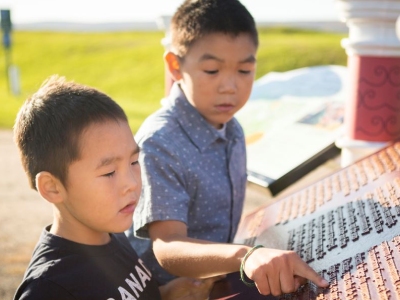
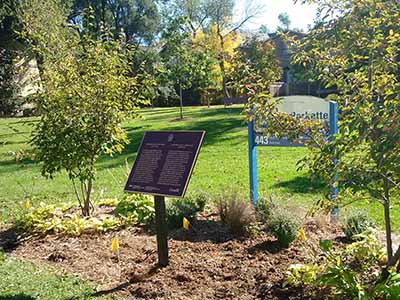
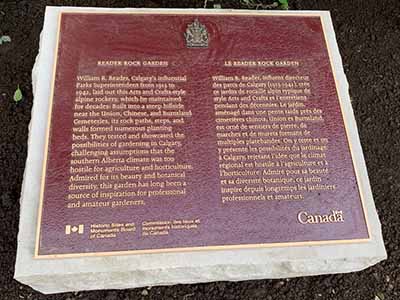
Production process
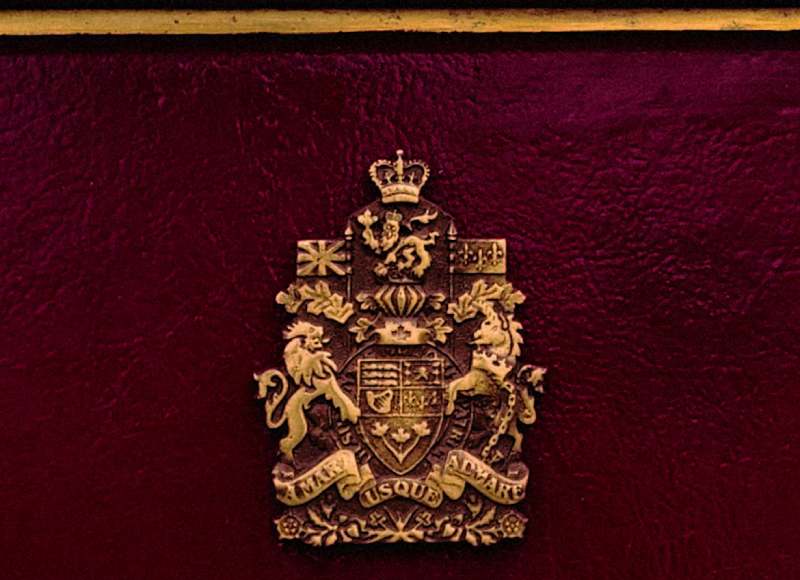
© Parks Canada, Alvin Santoro, 2022
The iconic HSMBC bronze plaques are produced to exacting standards by a contracted foundry. Molten bronze is poured into a standardized mould, and any imperfections are removed using a sand blaster. Holes are drilled for the mounting bolts and for the Government of Canada Coat of Arms, which is affixed to the plaque. The edges of the plaque are made straight and square, and the plaque is lightly finished to give it a satin look. The surfaces are coated with a primer, and the entire bronze casting is painted a special shade of maroon. Lastly, a protective clear coating is applied. After the coating has hardened, the plaque is wrapped for protection and transported.
Mounts and stands
Plaques are typically mounted on stands or occasionally installed directly on buildings. Parks Canada must assess landscape and built environment considerations for plaque locations, as well as matters related to universal access and public safety. The location of a plaque and its mount depends on the subject and its compatibility with the surrounding built environment. The choice of material can also be selected for its significance to a particular cultural group. In most instances, a minimalist approach is adopted using a simple metal or concrete stand.
Design
Since its establishment, the HSMBC has used many different plaque designs to commemorate its national historical designations. The earliest plaque design, known as the Fosbery model, was first introduced in 1920. It was cast entirely in a bronze colour, and showcased decorative detailed borders in a vertical layout. In the early 1970s, a new model was introduced known as the Roselawn. This model retained the vertical layout and the same approximate size, but did not have any of its decorative details. The background was maroon and the lettering, Coat of Arms, signature, and borders were bronze-coloured. Today, this model represents the majority of installed HSMBC plaques.
Diversity of languages
Over the last century, plaques have evolved to include a multitude of languages to describe the historic significance of the subject being commemorated. They always include English and French, and may sometimes include a third language, particularly when the commemorated subject is linked to the history of Indigenous peoples or ethnocultural communities. Parks Canada will often work with local experts to ensure a translation is done in the correct orthography. A variety of languages on commemorative plaques helps support a more inclusive, accessible, and engaging approach to public history.
See two examples below of multilingual bronze commemorative plaques, installed and unveiled in 2021 and 2022.
Théophile Panadis National Historic Person (1889-1966)
Plaque inscription in English
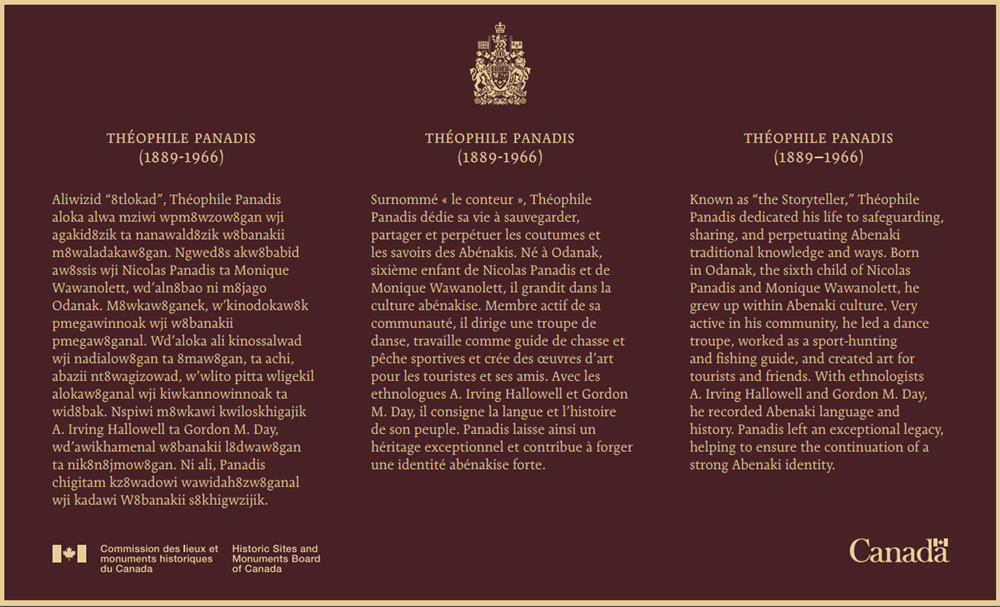
Théophile Panadis dedicated his life to safeguarding, sharing, and perpetuating Abenaki traditional knowledge and ways. Born in Odanak, Quebec, Panadis dedicated himself to passing on his vast knowledge of Abenaki culture and history to his community and sharing it with non-Indigenous people. He was a storyteller, artist, leader of a dance troop, and sought-after sport-hunting and fishing guide. His efforts left an exceptional legacy that helped to ensure the continuation of a strong Abenaki identity.
Plaque inscription in Abenaki
Aliwizid “8tlokad”, Théophile Panadis aloka alwa mziwi wpm8wzow8gan wji agakid8zik ta nanawald8zik w8banakii m8waladakaw8gan. Ngwed8s akw8babid aw8ssis wji Nicolas Panadis ta Monique Wawanolett, wd’aln8bao ni m8jago Odanak. M8wkaw8ganek, w’kinodokaw8k pmegawinnoak wji w8banakii pmegaw8ganal. Wd’aloka ali kinossalwad wji nadialow8gan ta 8maw8gan, ta achi, abazii nt8wagizowad, w’wlito pitta wligekil alokaw8ganal wji kiwkannowinnoak ta wid8bak. Nspiwi m8wkawi kwiloskhigajik A. Irving Hallowell ta Gordon M. Day, wd’awikhamenal w8banakii l8dwaw8gan ta nik8n8jmow8gan. Ni ali, Panadis chigitam kz8wadowi wawidah8zw8ganal wji kadawi W8banakii s8khigwzijik.
Winnipeg Falcons Hockey Club National Historic Event
English plaque inscription
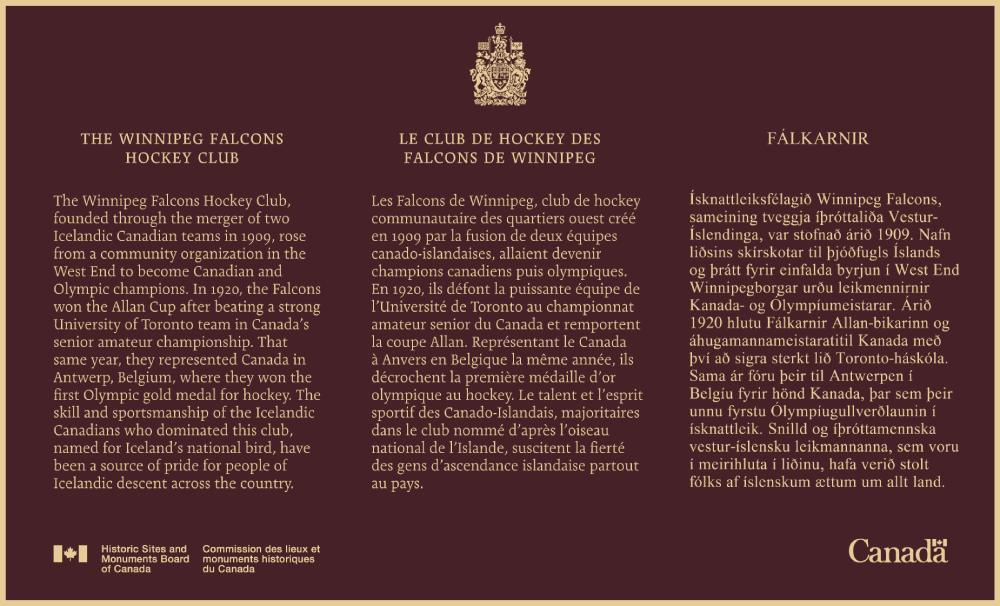
The Winnipeg Falcons Hockey Club, founded through the merger of two Icelandic Canadian teams in 1909, rose from a community organization in the West End to become Canadian and Olympic champions. In 1920, the Falcons won the Allan Cup after beating a strong University of Toronto team in Canada’s senior amateur championship. That same year, they represented Canada in Antwerp, Belgium, where they won the first Olympic gold medal for hockey. The skill and sportsmanship of the Icelandic Canadians who dominated this club, named for Iceland’s national bird, have been a source of pride for people of Icelandic descent across the country.
Icelandic plaque inscription
Ísknattleiksfélagið Winnipeg Falcons, sameining tveggja íþróttaliða Vestur-Íslendinga,var stofnað árið 1909. Nafn liðsins skírskotar til þjóðfugls Íslands og þrátt fyrir einfalda byrjun í West End Winnipegborgar urðu leikmennirnir Kanada- og Ólympíumeistarar. Árið 1920 hlutu Fálkarnir Allan-bikarinn og áhugamannameistaratitil Kanada með því að sigra sterkt lið Toronto-háskóla. Sama ár fóru þeir til Antwerpen í Belgíu fyrir hönd Kanada, þar sem þeir unnu fyrstu Ólympíugullverðlaunin í ísknattleik. Snilld og íþróttamennska vestur-íslensku leikmannanna, sem voru í meirihluta í liðinu, hafa verið stolt fólks af íslenskum ættum um allt land.
Maintenance
Parks Canada oversees close to 2000 plaques that commemorate national historic designations across the country. The ongoing care of plaques is a shared responsibility at Parks Canada. Teams of experts handle the installation, maintenance, and disposal of plaques. In some cases, Heritage Conservation Specialists provide technical assistance and professional advice on repairing and restoring plaques and monuments. Unfortunately, some plaques are prone to damage because of their environment, while others are subject to vandalism. Depending on their state and condition, plaques can be cleaned and repaired. In some cases, this work can be done on-site, while in other instances they are removed and refurbished at a Parks Canada maintenance building.
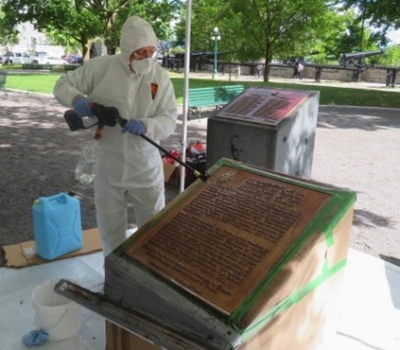
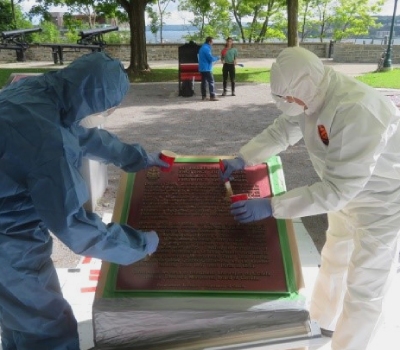
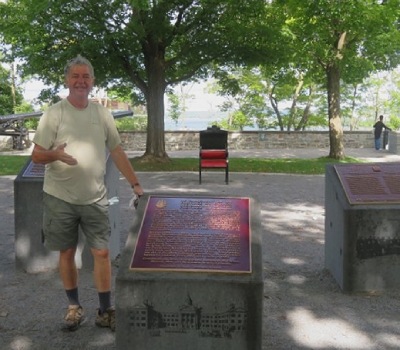
In 2021 and 2022, Parks Canada hired summer students to take part in a pilot project to assess, clean, maintain, and protect plaques in Nova Scotia, Prince Edward Island, and New Brunswick.
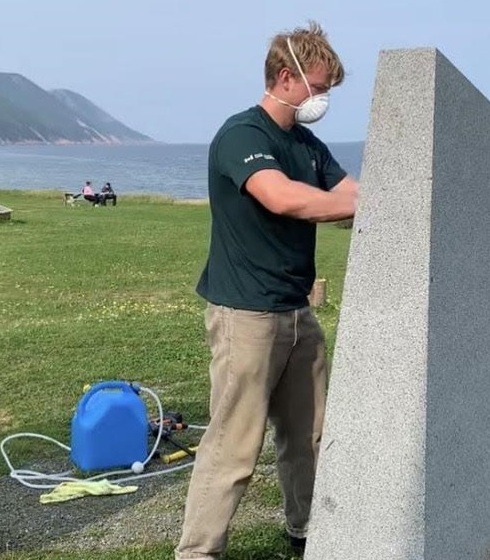
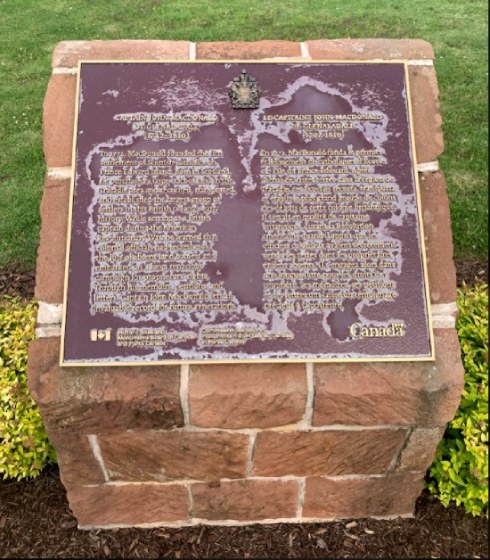
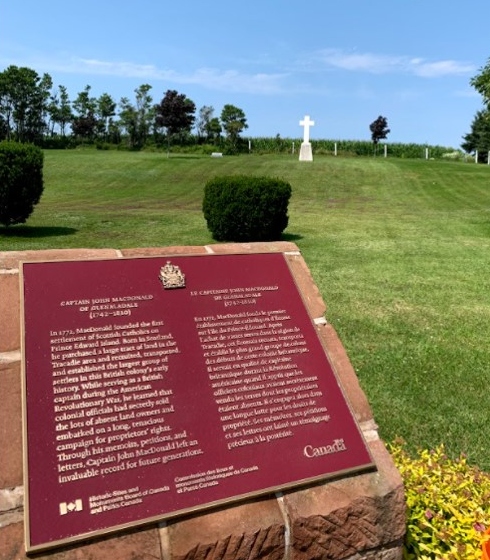
Related links
- Date modified :